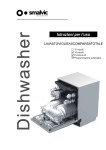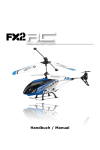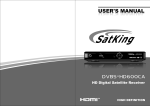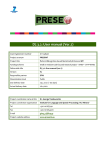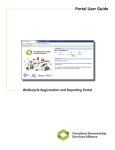Download Athena 6050 Instruction manual
Transcript
Instruction Manual Athena 6050 Temperature Controllers -THENIL INSTRUCTION MANUAL ATHENA 6050 Automatic Tuning Temperature Controller SPECIFICATIONS: Inputs: Line Voltage 120/240 Vac +lO%, -15%, 50, 60 Hz Sensor Thermocouple Power Consumption Less than 6 VA (Instrument) Ranges Available J Couple 0-1400°F (O-760°C) K Couple 0-2500°F (O-137O°C) Accuracy: 0.2% of full scale Temperature Stability 5 m V/°C Max 3m V/°C typ. Cold end tracking 0.05°C/°C ambient Operating ambient for rated accuracy 0 to 55°C Maximum T/C lead resistance for rated accuracy 100 Ohm Series mode noise rejection: 80 dB Common mode noise rejection 120 dB T/C break protection: Upscale standard Dual display: Process temperature displayed continuously; set point or other parameters updated on lower display. 1 Display update rate: 5 times per second Filtering: Analog and digital filtering techniques increase stability of process and display. °F/°C: Internal switch selection-process, set point. output: Heating only -B Relay (time proportioning) SPST relay 7 Amps resistive at 120 Vac, 5 amp resistive at 240 Vac, 50 VA inductive. -F Current proportional -S Pulsed voltage -T Triac time proportional 4-20mADC into 500 Ohm max. For driving SCR power controllers. 20 Vdc pulsed time proportioning signal for driving solid state relays. Solid state plug-in triac output. Rated 1 Amp holding & 10 amps inrush. Filtered LED display: 4 digits for process, 4 digits for parameters. T/C linearization: Continuously calculated and updated using rom based algorithm. Connections: Inputs and outputs via barrier strips with U.L. approved locking terminals. Dimensions: Front Case: Depth minus Mounting: Channel slides and screws Weight: 2 lb 2 panel: 96mm X 96mm X 22mm 92mm X 92mm X 118mm behind panel: 96mm (approx. panel thickness) 3 FRONT PANEL AOJUSTMENTS Touch Key 1 Index: Allows the following adjustments to be selected. 1) Set point temperature O-14OO'F (760°C) O-2500°F (O-137O°C) 2) Heat cycle time *1 to 120 seconds 3) Prop. Band (indicated as gain) 0.25-25% of span 4) Rate with tracking reset **4-255 seconds 5) Auto Tune (AT) Up/Down keys: increases/decreases values of above adjustments. Tune/Cancel: "cancel" puts output on stand-by to permit set-up "tune" triggers automatic tuning procedure E Enter: writes selected value to nonvolatile memory NOTES: *setting to zero initiates 60 millisecond timebase for ultra fast cycling. Use with external solid state relays or SCR Power Controllers. **Setting to zero disables reset and rate action for proportional only control. Reset is six times higher than rate FOR OPTIMUM RESULTS WITH THE AUTO-TUNE MODEL 6050 1. Set point must be a minimum of 100°F above ambient for proper start-up. 2. Multi-zone applications require auto-tune units on each zone and simultaneous warm-up. 4 3. Loss of power or turn-off during warm-up requires a re-start from ambient. 4. Change of state processes, i.e. solid to liquid or liquid to gas, may introduce erroneous tuning parameters during process warm-up. GENERAL 1. Accurately measures, linearizes and displays temperature in °F and °C. 2. Automatically calculates and displays parameters-heat gain, and rate/reset time. 3. Can be field converted from relay output "B", to solid state relay “T", to solid state driver "S" or to a 4-20 MA output SCR driver "F". 4. Will remember its "entered" settings after power failure or shut-off and not "Go To Sleep". CAUTION: HIGH VOLTAGE AN0 HIGH TEMPERATURES CAN CAUSE INJURY AN0 ARE A FIRE HAZARO. PLEASE REAO ALL INSTRUCTIONS, HAVE ONLY SKILLED PROFESSIONALS WIRE THE UNIT, AND USE APPROVED TEMPERATURE AND/OR PRESSURE SAFETY CONTROL. EVEN THE BEST COMPONENTS CAN BE DAMAGED OR MAY NOT FAIL SAFE. CONFIGURATION Depending on the model number of the unit you have ordered, vou will find one of four basic modules installed. The fifth digit of the code indicate the output module type. B - Relay 7A/5A @ 120/240 Vac F - 4-20 mA (Proportional) T - Triac 1 Amp @ 240 Vac S - 20 VDC Pulsed for driving solid state relays Example: 6050-F has proportional 4 to 20 mA heat output. Note: If you have not received your controller from the factory direct, check to confirm that the correct module for your application is installed. Since the modules plug-in, and since controller plug into cases as well, previous users may have changed modules, which can result in severe controller damage. 5 Output Modules The Athena 6050 offers users field interchangeable output modules. This unique feature makes it possible to fill output requirements for a variety of applications with a single controller model. Module Type B: This 7A/5A relay (at 120/240 Vac) is used for driving resistive heaters. NOTE: Do not use this output module with mechanical contactors because they generate an excessive EM1 field which can interfere the 6050's microprocessor. Instead we recommend "T" output modules for this application. Module Type F: This 4-20 mA output module can deliver full output to loads having an input impedance of 500 Ohms or less. The cycle time setting must be ZERO for smooth current output. A push-on terminal is utilized as a return for ground currents of the milliamp source. It is connected internally to the mating lug on the heat sink. To avoid ground loops, drive floating (ungrounded) loads or use isolated thermocouples. Module Type T: This solid state relay is capable of 1 AM? at 120/240 Vac. It is zero voltage switched and optically isolated from the drive signal. With it, resistive loads up to 120 watts at at 120 Vac and 240 watts at 240 Vac may be controlled directly. Using direct control there is no lower limit on the cycle time setting (down to 60 milliseconds). Larger loads may be controlled utilizing an external contactor. In this case, it is advisable to use cycle settings of ten seconds or greater to minimize contactor wear. External suppression of the contactor is mandatory. Module Type S: Similar to F, but pulsed 2OV/2OmA DC output for driving solid state relays. Up to 6 (input series connected) solid state relays can be used. Cycle time can be set to optimize the load response time requirements without sacrificing S.S.R. life. 7 INTERNAL SWITCHES Damping Control -To allow the controller to provide automatic tuning for processes with varying heating characteristics and with varying heating capabilities, the 6050 offers three damping choices: High damping: for over-powered heating systems, systems with multiple heat lags, and/or poor coupling between the heater and the temperature sensor. Normal: for most standard processes where the heater is properly sized for the system and there is good coupling between the heater and the temperature sensor. Low damping: for adequately powered systems with excellent coupling between the heater and the temperature sensor where quick response and the tightest possible temperature control are desired. Keypad Security -Switch 2 in the open position locks the operator out of access to all parameters except set point. CELSIUS/FAHRENHEIT DISPLAY SECTION Switch 1 allows both displays to read in degrees Celsius or Fahrenheit, and is indicated on front panel LED's. WIRING THERMOCOUPLE CIRCUITS Before wiring, check thermocouple and extension wire to make sure that they conform to the appropriate thermocouple type specified on the serial number tag. In thermocouple circuits, the negative lead is colored red. Extension wires must be the same alloy and polarity as the couple. The thermocouple circuit resistance should not exceed 100 OHMS. Do not run thermocouple leads in the same conduit as the power lines. If shielded thermocouple is used, terminate the shield only at the controller end using the corner screw provided for that purpose. STANDARD THERMOCOUPLES I.S.A. TYPE MATERIALS COLOR CODE J Iron Constantan (I/C) White(+) Red(-) K Chrome1 Alumel (C/A) Yellow(+) Red(-) 8 THERMOCOUPLE PLACEMENT Proper thermocouple placement can eliminate many problems in the system. The probe should be placed so that it can detect any temperature change with minimal thermal lag. In a process that requires fairly constant heat output, the probe should be placed close to the heater. In processes where the heat demand is variable, the probe should be close to the work area. Some experimenting with probe location is often needed to find its optimum position. In a bath process, addition of a stirrer will help to eliminate thermal lags. Since the thermocouple is basically a point measuring device, putting more than onethermocouple in parallel will provide an average temperature reading and produce better results in air heated processes. NOTE: If controls with "F" or "S" outputs drive loads with grounded or hot input terminals (not floating), an isolated thermocouple must be used. Otherwise, when both input and output are grounded, ground loop currents will result, causing errors and controller damage. Standard thermocouple limits of error are 4°F or 0.75% of sensed temperature (half that for special) plus drift caused by improper protection or overtemperature. This is far greater than controller error, and can not be corrected at the sensor except by selection and replacement. Start-Up Before line voltage is applied, double-check the following: Make sure the thermocouple type is correct, and properly connected (see section on thermocouples) to terminals 1 and 2 (red on 2). Make sure there is no AC or DC voltage leading or arcing to T/C. Make sure the proper terminals are selected for line voltage. (8 & 9 for 12OV, 8 & 10 for 24OV) Check to assure there are no heater shorts, or shorts to ground, and no bare wires or frayed insulation. Make sure correct plug-in module is used. 9 OPERATING INSTRUCTIONS How to Start the automatic tuning procedure STEP 1: Energize the unit and proceed immediately to step 2. STEP 2: Place the unit on standby by holding the "Index" button until the "Autotune" LED lights then press the Cancel button. The unit is now ready for set point and cycle time entry. STEP 3: To enter a set point: A) Hold "Index" button until the SP LED lights and B) Use the appropriate touch key, either up or down to enter set point. When you've entered the desired set point, simply press the enter key. NOTE: Set point must be at least 100°F above ambient. STEP 4: Set cycle time by advancing "Index" to "HC" and select desired value using up or down keys. Cycle time is shown in seconds, from 1-120. Setting zero initiates a 60 millisecond cycle time for ultra fast cycling for use with "F" or "S" output modules. For mechanical relays or contactors use l0-120 seconds. When you've found the desired cycle time press the enter key. STEP 5: To start warm up and calculate all PID parameters advance Index to auto tune again and press the "tune" button. The "AT" L.E.D. will light and "HT" L.E.D. will light. You may now index to any parameter for viewing as process heats. Upon completion of tuning, the "AT" L.E.D. will be off. NOTE: The parameters that the 6050 calculates automatically can be entered on the Athena 6000/6200 to achieve the same smooth and precise temperature control on your process. 10 How to override automatic tuning parameters It is possible to set or fine tune three mode parameters manually on the 6050. To manually enter parameters: 1) Press "Index" button until the LED for the desired parameter lights. 2) Enter the new parameter using the up or down key. 3) Press the "enter" button. The new parameters will now take control of the process. To calculate the PID parameters without using the automatic tuning mode, consult the Athena 6000/6200 instruction manual. Reading automatically calculated PID parameters Press the "index" key. The LED‘s in the "Index" display will light in sequence, and as they change, the lower digital display will show each parameter. 11 TROUBLE SHOOTING Front dark - no instrument power. Process display shows CCCC - Open thermcouple. Short terminals 1 and 2. Process display should indicate temperature at back of case. Repair or replace thermocouple. About Half or Twice Expected Reading - Check position of °C/°F switch. Short 1 and 2 to read room temperature. 22-30 is °C, 70-85 is °F. About 30% Error - Wrong thermocouple type. Disconnect couple. "J" units over range above 14OO°F, "K" above 2500°F. No Heat - No heater power, heater wiring, wrong output module. Heat Stays On - Welded relay contacts, shorted output module, or shorted power handler. Process Display Shows OOOO Or Initially Displays Room Temperature Then Counts Down Scale As Process Warns - Check for reversed thermocouple. Display blinks, entered values change - Caused by electromagnetic interference (EMI). Supress arcing contacts in system to eliminate high voltage spikes, seperate sensor and controller power wiring from "dirty" power lines. Ground heated devices. Unit Repairs It is recommended that units requiring service be returned to an authorized service center. When a controller is returned for service, a note stating the problem should accompany the unit. NOTE: Warranty is void when units are modified by the customer or other non-authorized parties. A spare parts list can be supplied upon request if complete model number, serial number and temperature range is supplied. 12 WARRANTY This equipment is warranted to be free from defects of material and workmanship. It is sold subject to our mutual agreement that the liability of Athena Controls, Inc. is to replace and/or repair at its factory, provided the equipment is returned, transportation prepaid within (2) years of its purchase. The purchaser agrees that Athena Controls, Inc. shall assume no liability for consequential damages resulting from its use or packaging of shipments returned to the factory. Components which wear or which are damaged by misuses are not warranted. These include contact points, fuses, triacs, and modules. Units which have been modified by customer are not warranted. Specifications are subject to change without notice. 13 dTHENd Controls, Inc., 5145 Campus Drive Plymouth Meeting, PA 19462 (215) 828-2490
















